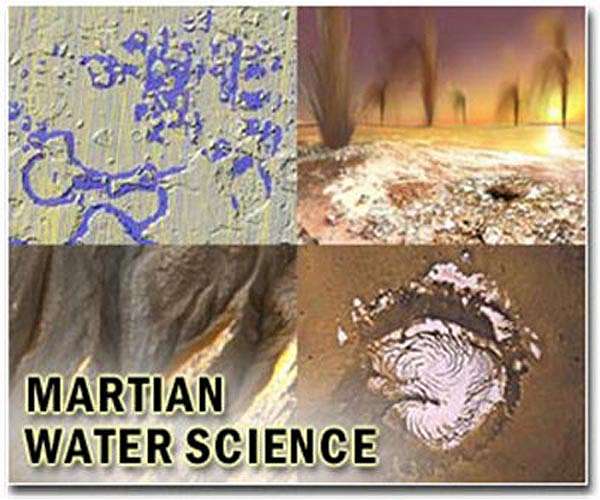Manganese discovery on Mars suggests ancient Earth-like conditions
by Clarence Oxford
Los Angeles CA (SPX) May 02, 2024
Researchers using the ChemCam instrument on NASA’s Curiosity rover have found significant amounts of manganese in the sedimentary rocks of Mars’s Gale Crater. This discovery suggests that these minerals were deposited by ancient bodies of water such as rivers, deltas, or lakes, according to findings published in the Journal of Geophysical Research: Planets.
“It is difficult for manganese oxide to form on the surface of Mars, so we didn’t expect to find it in such high concentrations in a shoreline deposit,” said Patrick Gasda, of Los Alamos National Laboratory’s Space Science and Applications group and lead author on the study. “On Earth, these types of deposits happen all the time because of the high oxygen in our atmosphere produced by photosynthetic life, and from microbes that help catalyze those manganese oxidation reactions.
“On Mars, we don’t have evidence for life, and the mechanism to produce oxygen in Mars’s ancient atmosphere is unclear, so how the manganese oxide was formed and concentrated here is really puzzling. These findings point to larger processes occurring in the Martian atmosphere or surface water and shows that more work needs to be done to understand oxidation on Mars,” Gasda added.
Developed by Los Alamos and CNES (the French space agency), ChemCam employs a laser to vaporize rock surfaces and analyze the resulting plasma for its elemental composition.
The team studied a variety of sediments in the crater, including sands, silts, and muds. They noted that the sandy sediments, being more porous, allowed groundwater to move through them more readily than the finer muds that dominate the lakebeds. They explored how manganese enrichment could occur in these sands, possibly through groundwater movement near a lake or delta, and what oxidants could be involved in manganese precipitation within these rocks.
On Earth, manganese is often concentrated by oxygen in the atmosphere, a process frequently accelerated by microbial activity. Microbes utilize the various oxidation states of manganese for energy. If ancient Mars hosted life, the high manganese content in these lake shore rocks could have been a crucial energy source.
“The Gale lake environment, as revealed by these ancient rocks, gives us a window into a habitable environment that looks surprisingly similar to places on Earth today,” said Nina Lanza, principal investigator for the ChemCam instrument. “Manganese minerals are common in the shallow, oxic waters found on lake shores on Earth, and it’s remarkable to find such recognizable features on ancient Mars.”
Research Report:Manganese-rich sandstones as an indicator of ancient oxic lake water conditions in Gale Crater, Mars
Related Links
Los Alamos National Laboratory
Mars News and Information at MarsDaily.com
Lunar Dreams and more




